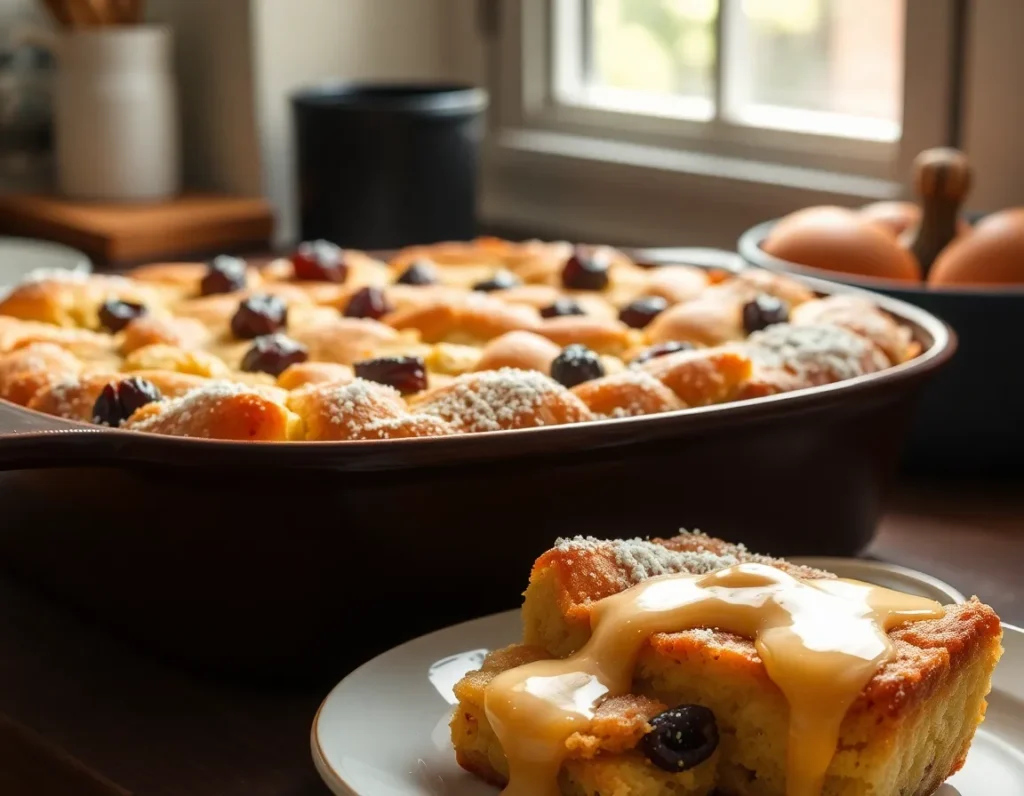Get ready to transform humble ingredients into a show-stopping dessert with this Bread Pudding recipe, perfect for both novice cooks and seasoned kitchen veterans. Imagine the comforting aroma of cinnamon and vanilla wafting through your home as the pudding bakes to golden perfection, its custardy richness cradling tender pieces of bread. This classic dessert promises a delightful medley of textures and flavors, from the soft, gooey interior to the slightly crisp top, making each bite a warm, sweet embrace.
What makes this recipe truly special is its simplicity paired with a touch of indulgence—think of layers of buttery brioche or challah, soaked in a creamy custard blend and dotted with plump raisins or chocolate chips. Whether you’re seeking to impress guests or simply indulge in a nostalgic treat, rest assured, you can easily master this dish. Embrace the joy of baking and let your senses guide you as you create a dessert that’s as comforting as it is delicious.
About This bread pudding Recipe
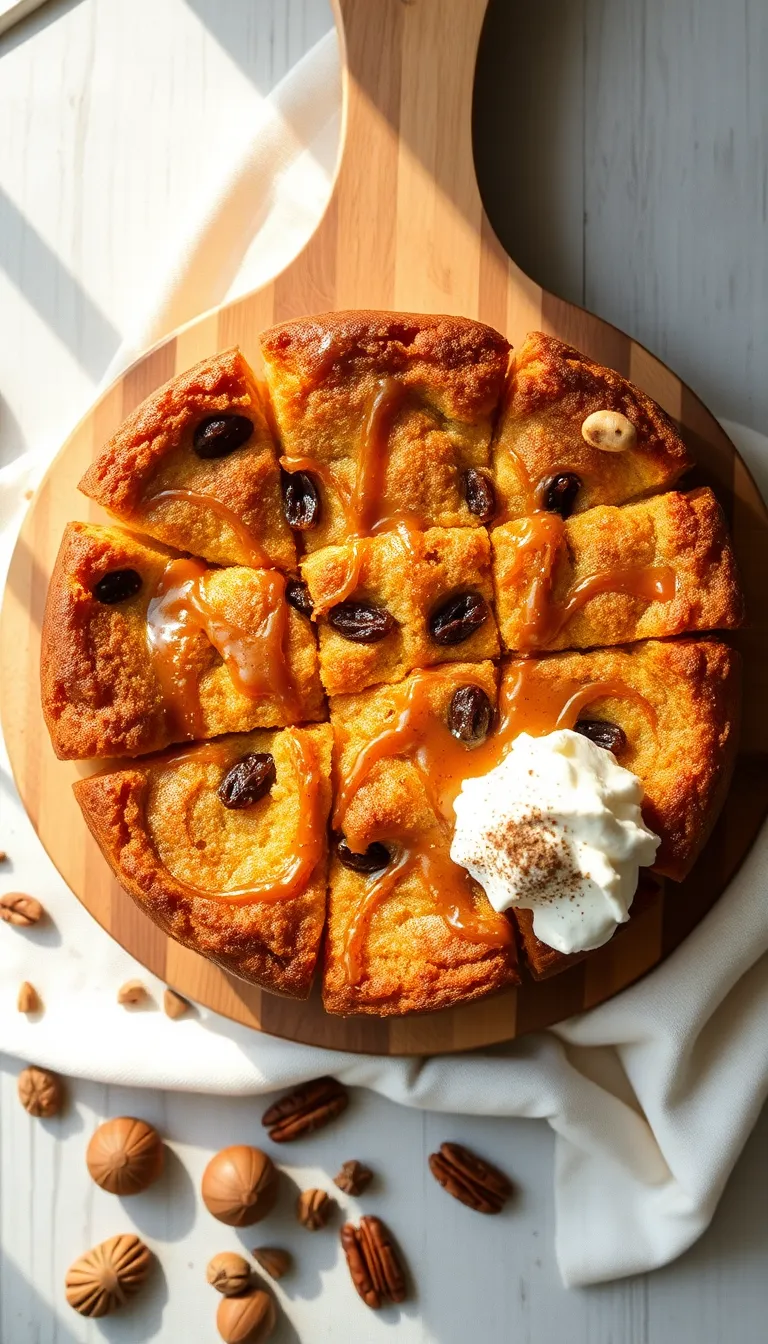
- Classic Comfort: This bread pudding recipe delivers all the cozy vibes with its rich, custardy center and perfectly golden edges.
- Quick and Easy: With minimal preparation and simple ingredients, you can have this dessert ready in under an hour.
- Versatile Flavor: Customize it with your favorite add-ins like chocolate chips, raisins, or nuts for a unique twist every time.
- Perfect for Leftovers: Transform day-old bread into a delectable treat, reducing food waste while satisfying your sweet tooth.
- Indulgent Yet Simple: The combination of vanilla, cinnamon, and nutmeg creates a warm, aromatic experience that feels luxurious without the hassle.
- Family Favorite: Loved by both kids and adults, it’s a dessert that brings everyone together with its irresistible taste and texture.
Why You’ll Love This Recipe

- Easy and Quick: This bread pudding recipe is a breeze to put together and perfect for when you need a comforting dessert in a hurry.
- Rich and Creamy Texture: The custard base creates a luscious, melt-in-your-mouth experience that elevates this classic dessert.
- Customizable Flavor: Add your favorite mix-ins like chocolate chips or dried fruits to make this recipe your own.
- Perfect for Leftovers: Use up stale bread to create a delicious treat, reducing waste while pleasing your palate.
- Warm and Spiced: Infused with vanilla and cinnamon, each bite offers a cozy, inviting flavor that’s perfect for any season.
- Nutrient-Rich Comfort: With eggs and milk in the mix, this dessert offers a good source of protein and calcium.
Ingredients
Ingredients
- 6 cups of day-old bread, cubed (French bread or brioche recommended)
- 2 cups of milk (whole milk for richer taste, or use almond milk for a dairy-free option)
- 1 cup of heavy cream
- 1 cup of granulated sugar
- 4 large eggs
- 1 tablespoon of vanilla extract
- 1 teaspoon of ground cinnamon
- 1/2 teaspoon of nutmeg
- 1/4 teaspoon of salt
- 1/2 cup of raisins (
Optional: substitute with dried cranberries or omit if not desired
)
- 2 tablespoons of unsalted butter, melted
- 1/4 cup of chopped pecans (optional)
- Maple syrup or caramel sauce for serving (optional)
- Powdered sugar for dusting (optional)
Kitchen Tools You’ll Need
- Mixing Bowl: Essential for combining the bread, custard mixture, and other ingredients. If you don’t have a large mixing bowl, you can use any large, clean container.
- Whisk: Used to thoroughly blend eggs, milk, sugar, and spices to create a smooth custard. A fork can be used as an alternative if a whisk is unavailable.
- Baking Dish: A 9×13-inch baking dish is typically recommended for baking the pudding evenly. You can also use any oven-safe dish of similar size.
- Measuring Cups and Spoons: Necessary for accurately measuring ingredients like milk, sugar, and spices to ensure the best flavor and consistency.
- Knife: Used for cutting the bread into cubes. A serrated bread knife works best, but any sharp knife will do.
- Spatula or Wooden Spoon: Useful for mixing the bread with the custard mixture and for transferring the mixture into the baking dish.
- Aluminum Foil: Helps prevent the top of the bread pudding from over-browning during baking. If aluminum foil is not available, a baking sheet placed on the top rack of the oven can be used as a shield.
Preparation Steps
- Preheat the oven to 350°F (175°C) and grease a baking dish with butter to prevent sticking.
- Cut the bread into 1-inch cubes and place them in the prepared baking dish, ensuring they are evenly distributed.
- In a large mixing bowl, whisk together eggs, milk, sugar, vanilla extract, and cinnamon until fully combined and the sugar has dissolved.
- Pour the egg mixture over the bread cubes, pressing down lightly with a spatula to ensure the bread absorbs the liquid. Let it sit for 10-15 minutes.
- Sprinkle raisins evenly over the top of the soaked bread mixture for added flavor and texture.
- Bake in the preheated oven for 45-50 minutes, or until the top is golden brown and the custard is set. A knife inserted into the center should come out clean.
- Remove from the oven and let cool for at least 10 minutes before serving to allow the pudding to firm up slightly.
Serving Suggestions

- Vanilla Ice Cream: Serve a warm slice of bread pudding with a scoop of vanilla ice cream. The cold, creamy texture complements the warm, soft pudding, creating a delightful contrast that enhances the dessert experience.
- Caramel Sauce Drizzle: Add a rich caramel sauce drizzle over the top of the bread pudding. This adds a sweet and buttery flavor that pairs perfectly with the custardy texture, while also improving the visual appeal.
- Fresh Berries: Garnish with a handful of fresh berries, such as raspberries or blueberries. Their tartness and vibrant color provide a refreshing balance to the sweetness of the pudding and make the dish visually attractive.
- Whipped Cream: Top with a dollop of freshly whipped cream. The light and airy texture complements the dense bread pudding, making it feel more luxurious and special for occasions like brunch or dinner parties.
- Coffee or Espresso: Pair the bread pudding with a cup of freshly brewed coffee or espresso. The robust flavors of the coffee enhance the dessert’s richness, making it an excellent choice for breakfast or an afternoon treat.
- Spiced Nuts: Sprinkle some spiced nuts, such as cinnamon-glazed pecans, on top. They add a crunchy texture and a hint of spice that enriches the overall flavor profile, perfect for a festive gathering or holiday meal.
Final Thoughts: Bread pudding is a versatile dessert that can be adapted to suit various tastes and occasions. Whether you prefer a classic presentation with ice cream or a more sophisticated touch with fresh berries and caramel, these serving suggestions will ensure your dish is both delicious and visually appealing. Enjoy experimenting with different combinations to find your perfect match!
Pro Tips for Perfect Results

- Use Stale Bread: For the best texture, use day-old or slightly stale bread. Fresh bread may become too mushy when soaked in the custard mixture.
- Custard Soak Time: Allow the bread to soak in the custard mixture for at least 30 minutes before baking. This ensures the bread absorbs maximum flavor and moisture, resulting in a richer pudding.
- Flavor Infusion: Add depth to your bread pudding by incorporating a splash of bourbon or rum into the custard. This adds a subtle warmth and complexity to the dish.
- Perfect Bake: Bake the pudding in a water bath to prevent the edges from overcooking and ensure even baking. Place the baking dish inside a larger pan filled with hot water before transferring it to the oven.
- Make-Ahead Tip: Prepare the bread pudding up to the baking step a day in advance. Cover and refrigerate, then bake it fresh on the day of serving for optimal texture and flavor.
- Chef’s Secret: For an added flavor boost, sprinkle a pinch of sea salt on top of the pudding just before baking. This enhances the sweetness and adds a delightful contrast to the rich, creamy custard.
Common Mistakes to Avoid
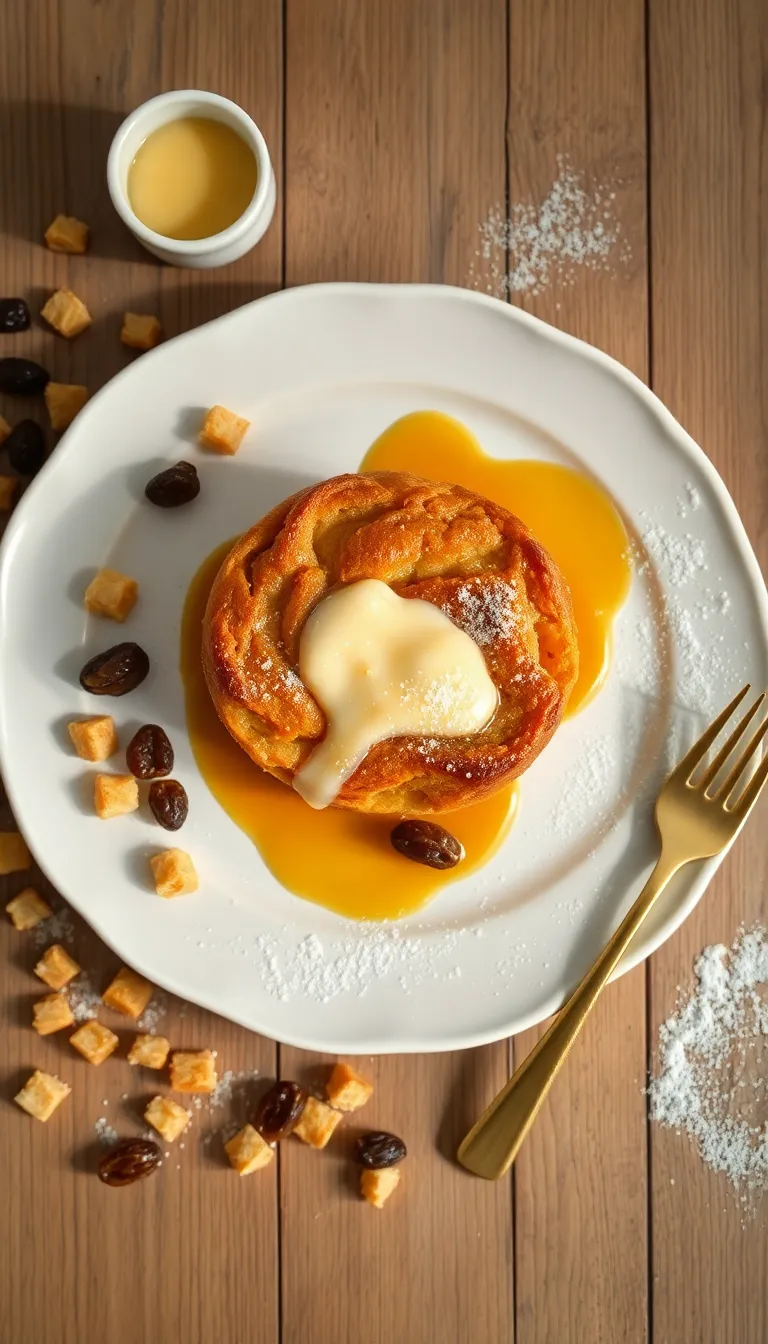
- Using Bread That Is Too Fresh: Fresh bread can be too moist and will result in a soggy bread pudding. To avoid this, use day-old or slightly stale bread, which absorbs the custard better. If you only have fresh bread, try toasting it lightly before using.
- Not Allowing Enough Soaking Time: Rushing the soaking process can lead to dry spots in your pudding. Ensure the bread has ample time to absorb the liquid by allowing it to sit for at least 30 minutes before baking. This will help achieve a consistent texture throughout.
- Overbaking: Bread pudding should be moist and custardy, not dry. Overbaking can occur if the pudding is left in the oven too long. To prevent this, bake until the edges are set but the center remains a bit jiggly. It will continue to firm up as it cools.
- Skipping the Water Bath: A water bath helps cook the pudding evenly and prevents it from curdling or cracking. Place your baking dish in a larger pan with hot water reaching halfway up the sides of your dish. This ensures gentle cooking.
- Ignoring Ingredient Ratios: Getting the right balance of bread to custard is crucial. Too much bread makes it dry, while too much liquid makes it soggy. Follow the recipe closely and measure ingredients accurately to maintain the proper ratio.
Storage and Reheating Tips
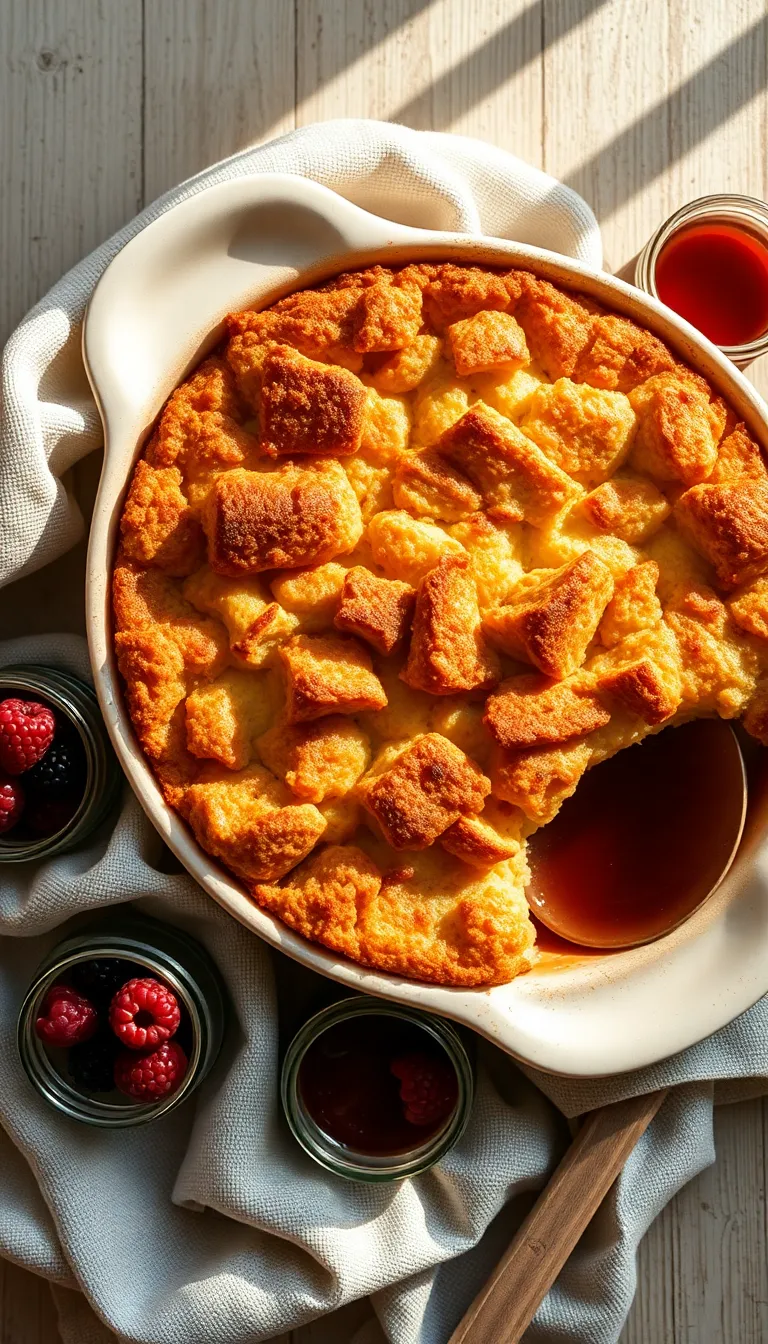
- Allow the bread pudding to cool completely before storing to prevent condensation and sogginess.
- Transfer the bread pudding to an airtight container or cover the dish tightly with plastic wrap or aluminum foil.
- Store in the refrigerator for up to 3-4 days for optimal freshness and quality.
- Freezing Instructions: Bread pudding can be frozen for longer storage. Wrap individual portions tightly in plastic wrap and then place them in a freezer-safe zip-top bag or container. Freeze for up to 2-3 months.
- To defrost, transfer the frozen bread pudding to the refrigerator and let it thaw overnight.
- Reheating in the Oven: Preheat your oven to 350°F (175°C). Cover the bread pudding with foil to prevent it from drying out, and bake for about 15-20 minutes or until heated through.
- Reheating in the Microwave: Place a portion of bread pudding on a microwave-safe plate, cover with a damp paper towel, and heat for 1-2 minutes or until warm, checking at intervals to avoid overheating.
- For a crispier top, consider reheating under the broiler for a few minutes after microwaving or baking, but watch closely to prevent burning.
- Food Safety Tip: Ensure that the internal temperature of the reheated bread pudding reaches at least 165°F (74°C) to ensure it is safe to eat.
Frequently Asked Questions

Frequently Asked Questions
Q: Can I use stale bread for the bread pudding?
- Yes, using stale bread is actually preferred as it absorbs more of the custard mixture, resulting in a richer flavor.
Q: What kind of bread works best for bread pudding?
- Challah, brioche, or French bread are ideal due to their soft texture and ability to soak up the custard.
Q: Can I substitute the dairy in the recipe for a non-dairy option?
- Yes, you can use almond milk, coconut milk, or oat milk as alternatives to cow’s milk.
Q: How do I prevent my bread pudding from becoming soggy?
- Ensure the bread is dry and adequately stale, and avoid over-soaking it in the custard mixture to maintain a good texture.
Q: What can I add to the bread pudding for extra flavor?
- Try adding dried fruits, nuts, or spices like cinnamon or nutmeg to enhance the flavor profile of your pudding.
Q: How can I tell when the bread pudding is done baking?
- It’s done when a knife inserted into the center comes out clean, and the top is golden brown and slightly puffed.
Final Thoughts
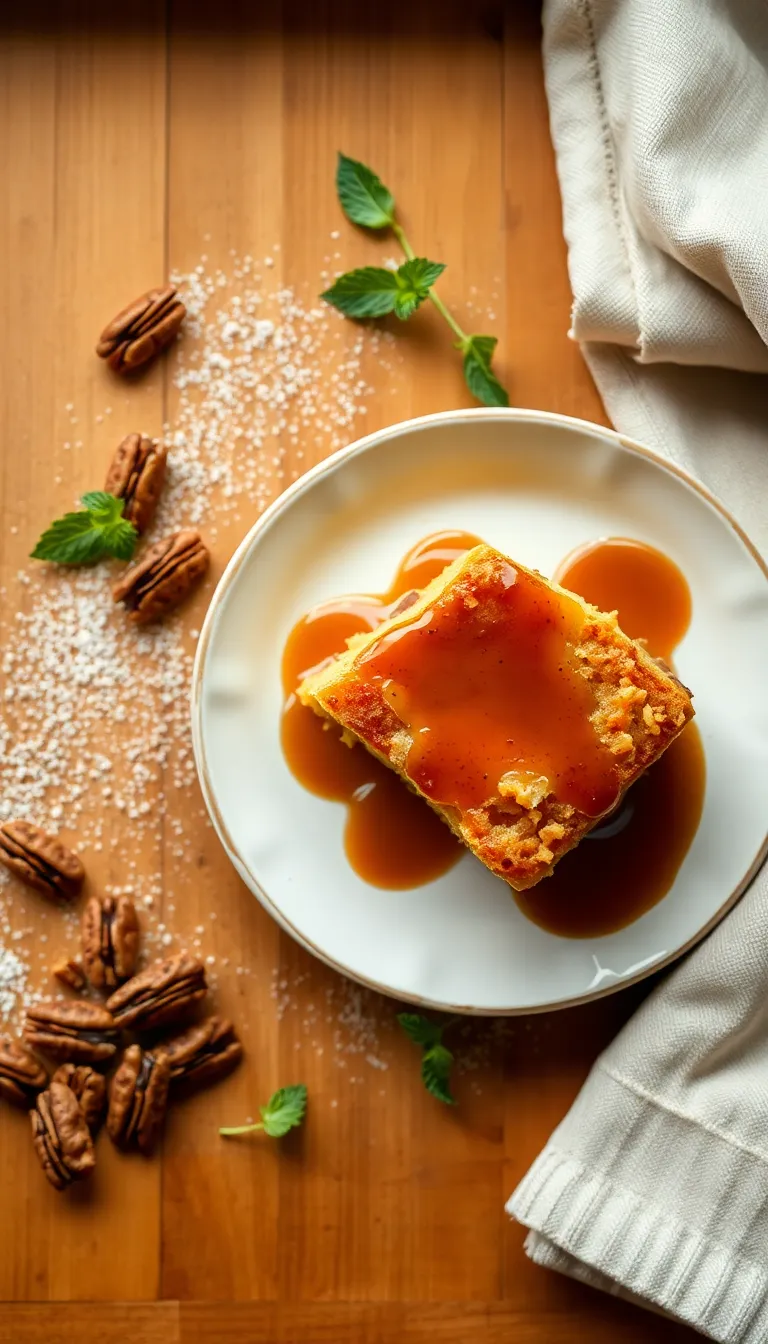
This bread pudding recipe is a delightful way to transform stale bread into a comforting and indulgent dessert. With its rich, custardy texture and the perfect balance of sweetness and spice, it’s a classic dish that never fails to please. The simplicity of the ingredients allows the flavors to truly shine, making it a must-try for anyone who loves traditional comfort food.
Don’t hesitate to put your own spin on this recipe by adding your favorite fruits, nuts, or spices to make it uniquely yours. Experimenting with different flavors can make each batch a delightful new experience, and you’ll find joy in creating something that reflects your personal taste. Remember, the heart of cooking is creativity and exploration.
We warmly invite you to try making this bread pudding in your own kitchen. It’s a recipe that not only fills your home with a wonderful aroma but also brings a sense of warmth and satisfaction to everyone who shares it. Happy cooking!

Hi, I’m Anjali Arora — the curious heart behind Feast Chase.
To be honest, I’ve always felt most at ease in my own company. I’m not exactly a people-person (small talk still makes me cringe), but there are two things I’ve always loved deeply: animals and food.
